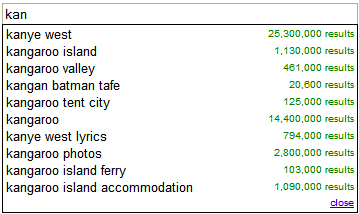At Google, we strive to be green all year round, not just on St. Patrick's Day. We've been working hard to design our offices around the world to be as environmentally friendly as possible. We have a set of internal Workplace and Sustainability Design Guidelines which we use to ensure that we're providing healthy and productive workplaces for Googlers everywhere. In San Francisco, our office was recently rated Gold by the
U.S. Green Building Council's LEED (Leadership in Energy and Environmental Design) Green Building Rating System. We're excited about this certification because it means we're on the right track with our approach to building environmentally sound offices.
Here are a few of the design strategies we implement to make our office buildings as green as possible. We thought they might even give you some ideas for greening your own home.
Reduce, reuse, recycleWe have frugal roots from our start-up days, so when we remodel an office, we reuse as many materials as possible. This strategy saves us money, and it avoids the environmental footprint associated not only with manufacturing and transporting new goods, but also with disposing of the old stuff. Construction and demolition waste makes up about 40% of the solid waste stream in the U.S. In the San Francisco office, we reused everything from partition walls and door assemblies to carpet and furniture left behind by the previous tenant. Plus, more than 64% of what we did throw away was recycled.
Healthy and sustainableSometimes, the simplest defense is the best defense, like the "Larry and Sergey Sniff Test": if it smells bad, it's probably bad for you (Larry and Sergey are a little busy to do all the sniffing themselves, so we help them out sometimes). The all-too-familiar new paint or new carpet smell is usually the sign of toxic
VOCs (volatile organic compounds) off-gassing into the air we breathe. Of course, we have to go on more than just our noses, so we also rely on third-party certification programs (like
Cradle to Cradle,
Scientific Certification Systems, and those incorporated into LEED) and information from manufacturers to ensure that we use the healthiest products available. All the paints, sealants, adhesives, carpet, and furniture we purchased for the San Francisco office had the lowest possible levels of VOCs and formaldehyde, both of which have adverse effects on
indoor air quality and long-term health. We also looked for sustainable materials that are locally manufactured, high in recycled content, and free of environmentally harmful materials like PVC.
Keeping it cool (or warm)We make every effort to heat, cool and light our offices with the minimal amount of energy needed, and use building controls to ensure these systems are only on when we need them. Some of these strategies work everywhere, like installing motion sensors to control lighting and purchasing
Energy Star-rated office equipment in the U.S. Other times, solutions are more site specific. In San Francisco, like many of our offices, we lease space in a building with many other tenants, which can often be an obstacle to implementing measures to save energy. We worked side by side with our landlord to retrofit the existing HVAC (heating, ventilation, air conditioning) system to make it more efficient. At our headquarters in Mountain View, we have a
1.6MW PV system, as well as a cutting-edge building management system that monitors and controls all of our energy use across campus (like
PowerMeter, but with a few more bells and whistles).
Every drop countsWater is one of our planet's most undervalued natural resources, and we're always looking for innovative and cost effective ways to use it more wisely. In San Francisco, as well as most of our other offices, we installed efficient faucets and flush valves in the bathrooms and kitchens. In locations where we have more green space like Mountain View, we use drought-resistant landscaping when possible. We just opened a new office in Sydney (which is undergoing
Green Star certification through the
Green Building Council of Australia), where waste water will be treated and recycled for toilet flushing and irrigation.
Location, location, locationIf you visit the San Francisco office, you might not notice the low-VOC carpet, but you definitely won't miss the spectacular views of the San Francisco Bay and the
Bay Bridge. Access to natural light and views increases Googler productivity and happiness, and decreases our energy costs by reducing the need for artificial lighting. Plus, like many of our offices, the San Francisco office is centrally located and easily accessible by public transit. We also provide preferred parking for carpools and vanpools, on-site bike storage, showers and changing facilities.
We've done a lot of work to be greener, but that doesn't mean we've reached the end of the rainbow and that pot of gold yet. We're constantly learning more about green building and ways to save energy. However, on this greenest of holidays, we're wearing the LEED certification of the San Francisco office as a badge of green pride -- a shamrock, you could say.
Posted by Anthony Ravitz, Real Estate and Workplace Services, and Lacy Caruthers, Green Business and Operations Strategy





















